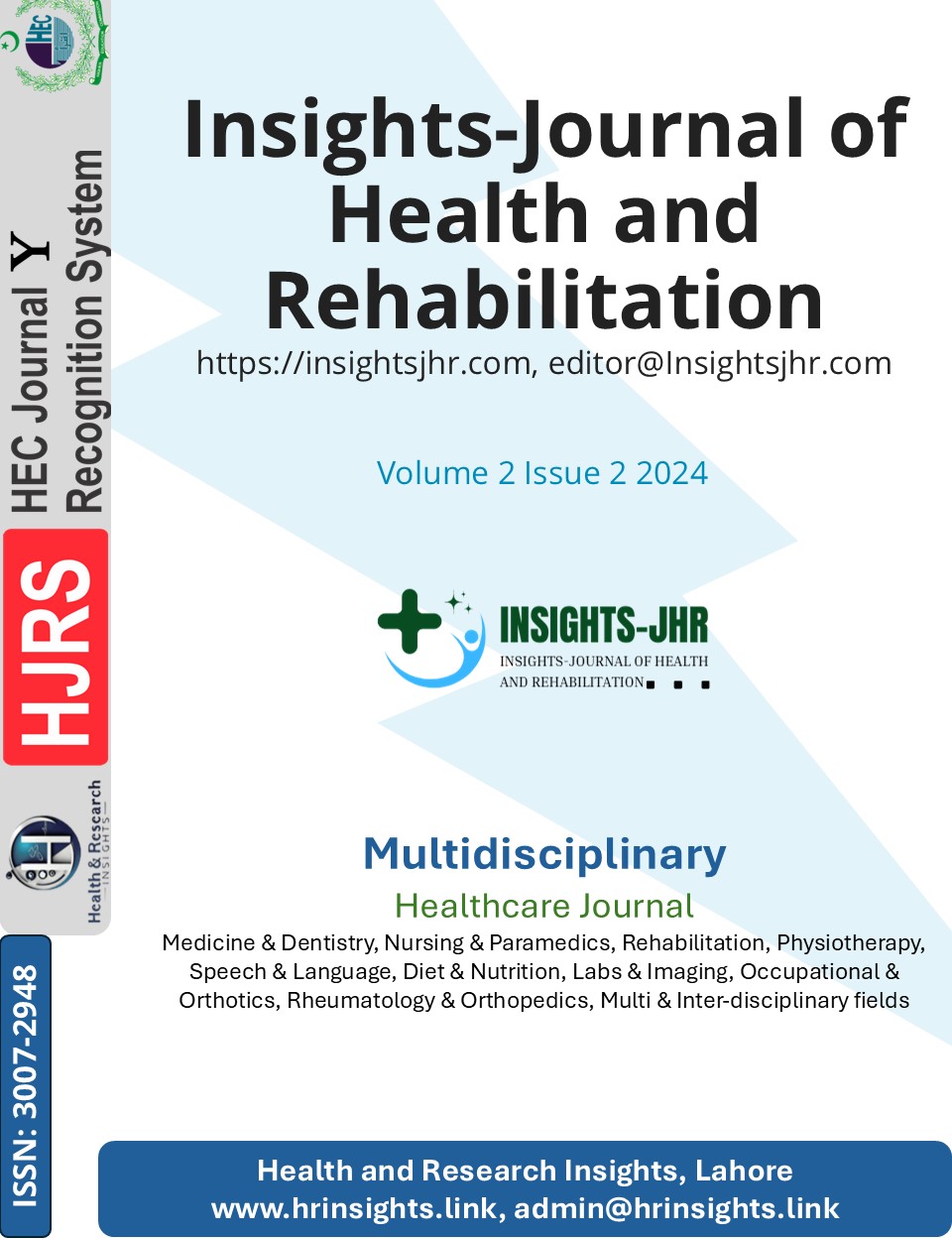EFFECTS OF SLUMP NEURAL MOBILIZATION FOR THE TREATMENT OF CHRONIC RADICULAR LOW BACK PAIN
DOI:
https://doi.org/10.71000/ijhr190Keywords:
Back pain, chronic pain, low back pain, neurodynamics, neural mobilization, proprioceptive neuromuscular facilitation, randomized clinical trialAbstract
Background: Low back pain is a prevalent global health issue affecting individuals across all age groups, impacting their physical, mental, and social well-being. It is a significant concern in both developed and underdeveloped countries and a leading cause of disability worldwide. Chronic radicular low back pain, characterized by radiating discomfort due to neural irritation, demands effective therapeutic interventions to alleviate symptoms and improve quality of life.
Objective: This study aimed to evaluate the effects of slump neural mobilization in conjunction with baseline treatments for managing chronic radicular low back pain.
Methods: A randomized clinical trial was conducted in outpatient departments of multiple hospitals, enrolling 20 participants who met the inclusion and exclusion criteria. Participants were randomly allocated into two groups, with 10 in each group. Group A received slump neural mobilization combined with proprioceptive neuromuscular facilitation rhythmic stabilization and hot pack therapy. Group B received rhythmic stabilization techniques and hot pack therapy alone. Interventions were provided three times per week for five weeks. Pain intensity was assessed at baseline, the second week, and the fifth week using the Numeric Pain Rating Scale. Statistical analyses included the Mann-Whitney test for between-group comparisons and the Friedman test for within-group comparisons.
Results: Between-group analysis revealed significant reductions in pain levels, with p-values of 0.018 at baseline and 0.02 at the fifth week, while results at the second week were not significant (p = 0.173). Within-group analysis using the Friedman test demonstrated statistically significant reductions in pain for both groups, with p = 0.000. In the treatment group, mean pain scores decreased from 5.70 at baseline to 3.90 at the second week and 1.40 at the fifth week, while the control group showed reductions from 4.20 at baseline to 3.30 at the second week and 2.90 at the fifth week.
Conclusion: The study concluded that slump neural mobilization, when combined with baseline treatments, significantly reduced pain levels in patients with chronic radicular low back pain. These findings support its incorporation as an effective non-invasive intervention in physical therapy.
Downloads
Published
Issue
Section
License
Copyright (c) 2024 Anbreena Rasool, Javeria Ashraf, Mariam Mehmood, Rubina Zulfqar, Mehneel Saqib, Mahnoor Zia (Author)

This work is licensed under a Creative Commons Attribution-NonCommercial-NoDerivatives 4.0 International License.







